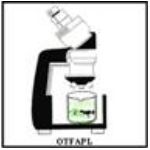AGLS 6502 Lecture 20.6 - The Javelina or Quenk:
Socio-Economic Factors
The collared peccary as a semi-domesticated livestock species serves to satisfy markets for animal protein and hides. Peccaries are important throughout their ranges, and referred to as possibly being the most important of all taxonomic groups as a source of protein and skin in the neo-tropics.
Robinson and Redford (1991) reported on the international trade in Peccary hide, and made reference to Broad (1984) and Huidberg-Hansen (1970e) who indicated that collared peccary leather trade in Europe and Japan involved as many as 2,013,006 skins. Trade involving a German importer from Paraguay resulted in an annual purchase of 36,000 hides (Robinson and Redford, 1991). Between the period 1976 - 1979, some 172,371 pelts to the value of US $ 1.025 million were traded from Argentina (Robinson and Redford, 1991). The Mexican wild animal trade valued the collared peccary hide at US $ 5 (Robinson and Redford, 1991). In Trinidad, the collared peccary serves as an indigenous source of meat, and is a delicacy which is sold at an average of TT $ 45/kg (Asibey, 1986).
Exploitation of the collared peccary for the international market has resulted in this animal being scheduled as an Appendix II species under the Convention on International Trade in Endangered Species of Wild Flora and Fauna (CITES). In Trinidad and Tobago harvest of the collared peccary is managed under the provisions of the Conservation of Wildlife Act Ch. 66:01, Laws of Trinidad and Tobago. Under this legislation hunting is permitted for a five month period, from October to February inclusive.
The collared peccary is unofficially listed as an endangered species - the population being low due to habitat loss and over-exploitation in Trinidad and Tobago. Its contribution to the economic or nutritional status of rural communities in Trinidad and Tobago may appear to be negligible. However, its introduction as a captive bred species may serve to contribute to the well-being of those farmers involved.
To provide an economically viable industry, the peccary will have to compete with established livestock species such as the domestic pig, goats and sheep. Improvements will be necessary in the areas of reproduction, growth rate, and feeding and nutrition. Any mechanisms which could be developed to reduce the over-head costs, and the time to market, will serve to propel the collared peccary into the realm of a viable livestock industry.
Helpful Links, Photos, Videos and Multimedia
